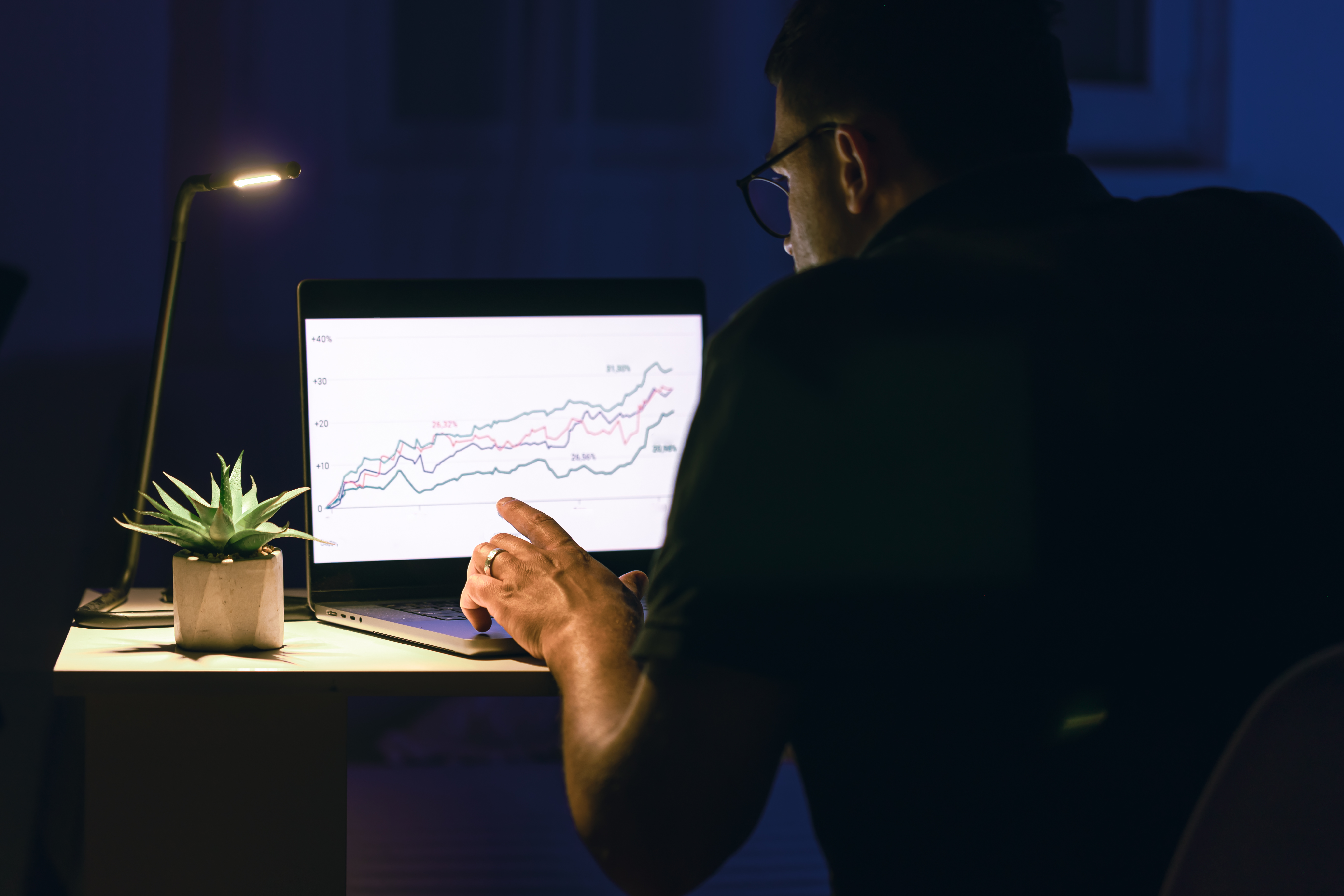Do you remember there were days when investing in private equity, real estate or fine art meant navigating a maze of paperwork, gatekeepers and six-figure minimums? Thankfully, those days are gone. Now, fintech, blockchain and AI are not just buzzwords—they are bulldozers. They are now flattening barriers and rewriting the rules of alternative investments. Today, a teacher in Texas can own a slice of a Manhattan skyscraper. A startup founder in Seattle can diversify into rare wines with a few taps. This isn’t just progress—it’s a revolution.
Let’s explore how tech trends in investing are democratizing access, boosting transparency, and empowering smarter decisions—and what it means for your portfolio.
1. Fintech in Alternative Investments: From Paperwork to Power Tools
A decade ago, investing in alternatives meant weeks of faxing forms, chasing signatures, and praying your check cleared. Today, fintech platforms have turned that nightmare into a seamless digital experience.
How it works:
- Fractional ownership: Platforms like Yieldstreet and Masterworks let you invest $5,000 in a Picasso painting or a Miami condo—no art degree or real estate license is needed.
- 24/7 liquidity: Secondary markets (think “stock exchanges for private assets”) are booming. Private equity secondary transactions surged to $134 billion in 2022, up 20% year-over-year (Jefferies Global Secondary Market Report).
But here’s the kicker: Fintech isn’t just about convenience. It’s about democratizing wealth-building. The global digital alternative investment assets market is projected to hit $30 trillion by 2030 (Preqin forecasts, 2024)—and everyday investors are driving that growth.
Real-world impact:
In 2023, a retired nurse in Florida used a fintech platform to invest $10,000 in a private solar farm. Two years later, her stake generated 12% annual returns—outpacing her S&P 500 index fund.
2. Blockchain and Investing: Trust Built on Code, Not Handshakes
Blockchain’s real power isn’t crypto volatility—it’s tokenization. It is a process of converting physical assets into digital tokens. Imagine owning a share of a Manhattan office building as easily as buying Amazon stock.
How it’s changing the game:
- 24/7 global trading: Tokenized assets trade on blockchain networks that bypass traditional market hours. In 2018, the St. Regis Aspen Resort in Colorado was tokenized, allowing 18,000 investors to buy shares starting at $1,000 (The Aspen Times). There, transactions got settled in minutes and not in months.
- Fraud-proof records: Every trade is logged on an immutable public ledger. A 2023 Deloitte study found blockchain reduces administrative costs by up to 31% by cutting manual audits.
Why this matters for you:
Tokenization isn’t just for billionaires. A World Economic Forum report showed 62% of the young population now include alternatives in their portfolios—up from 28% in 2018. Blockchain makes that shift possible.
3. AI for Portfolio Management: From Crystal Balls to Cold, Hard Data
Gone are the days of relying on gut feelings and Excel sheets. AI tools now analyze satellite imagery, social media trends, and even patent filings to predict risks and opportunities.
Real-world applications:
- Predicting shortages: In 2023, AI flagged a looming lithium shortage by analyzing drone footage of Chinese EV factories. Investors who pivoted early saw 30%+ returns (McKinsey).
- Red flags, automated: Algorithms at firms like Palantir scan startup payroll systems to detect talent drain—a key predictor of failure.
But a reality check:
As Warren Buffett says, “Predicting rain doesn’t count. Building arks does.” AI isn’t replacing human judgment—it’s arming it with better data. For example, BlackRock’s Aladdin platform uses AI to simulate how rising interest rates might impact your private equity holdings. The result? Advisors spend 40% less time on manual analysis (BlackRock, 2023).
4. Digital Platforms: Your Pocket-Sized Investment Office
Digital platforms are doing for alternatives what Netflix did for movies—putting endless options at your fingertips. Imagine tracking your Singapore venture fund, Napa Valley vineyard, and crypto holdings in one app.
What’s new:
- Stress-test your portfolio: Tools like Addepar simulate how a 2% rate hike or a recession could impact your assets.
- Custom curation: Algorithms build portfolios mixing real estate, startups, and art based on your risk tolerance.
Case study:
A San Francisco wealth manager used Moonfare to shift 20% of client portfolios into private equity. The result? Average returns jumped 4% in 2023—without increasing risk exposure.
The bottom line:
Advisors are swapping spreadsheets for strategic conversations. As one portfolio manager told us, “I used to spend hours compiling data. Now I spend minutes explaining it.”
5. Tech Trends in Investing: The Next Frontier
The revolution is just beginning. Here’s what’s coming:
DeFi meets Wall Street: Platforms like Maple Finance now let investors borrow against tokenized private equity stakes—no banks needed. By 2025, DeFi could unlock $800 billion in illiquid asset value (Bank of America Report).
Quantum leaps: IBM’s quantum team recently priced a complex patent portfolio in 37 seconds—a task that took humans 3 weeks. Imagine applying that speed to rare art or mineral rights
AI auditors: Tools like Chainalysis are helping regulators track undisclosed fees in private funds. The SEC’s 2023 report showed AI audits reduced compliance errors by 65% year-over-year.But a word of caution:
New tech means new risks. Always ask:
- “Who’s auditing this platform?”
- “Where’s the historical data?”
- “What’s the exit strategy?”
The PCR Insights Perspective: Technology as a Tool, Not a Tyrant
At PCR Insights, we have seen firsthand how tech can transform alternatives—but only when it serves human wisdom. Here’s our take:
Access ≠ Expertise: Tools like AI and blockchain democratize entry, but experience still matters. A tokenized skyscraper can still crumble if the HVAC system fails.Data Over Dogma: Replace “This is how we’ve always done it” with “What does the algorithm say?”
Risk in New Clothes: Cybersecurity threats, regulatory gray areas, and algorithmic bias are real. Vet tech partners as rigorously as fund managers.
Your Next Move
Technology isn’t just changing alternative investments—it’s creating a new playbook for building wealth. Whether you are an investor or advisor, here’s how to adapt:
Start small: Use fintech platforms to test fractional ownership in assets you understand.Ask “Why?”: If a blockchain project can’t explain its value in one sentence, walk away.
Blend old and new: Pair AI-driven analytics with veteran fund managers who have survived recessions.
The future isn’t about choosing between spreadsheets and algorithms. It’s about using both to make decisions that are faster, smarter, and deeply human.
Ready to begin?
The first step is simple: Replace “I don’t know where to start” with “Let’s see what the data says.”
Conclusion
Technology isn’t just changing alternative investments—it’s making them accessible, transparent, and data-driven. For investors, this means fewer gatekeepers and smarter strategies. For advisors, it’s a call to embrace tools that add value, not just spreadsheets.
At PCR Insights, we believe the future isn’t about replacing humans with machines. It’s about using tech to empower better decisions—so you focus on what matters most: your goals.


.jpg)
.jpg)
